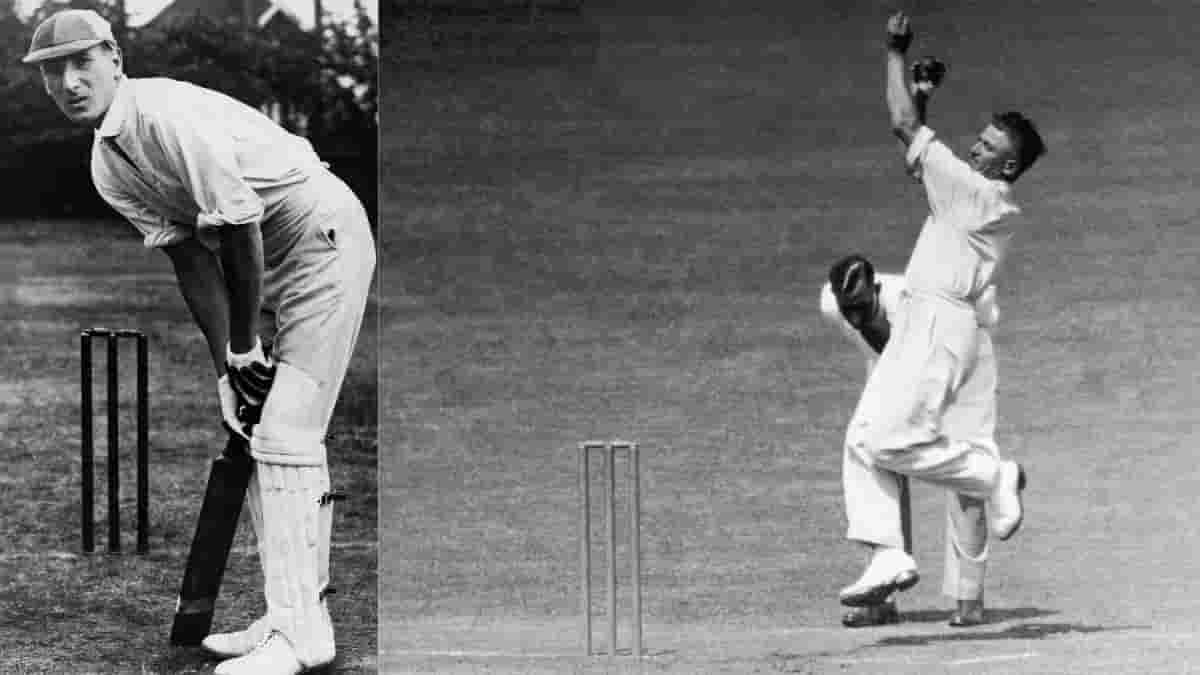 Source: Twitter/PictureSporting
Source: Twitter/PictureSporting
Few matches in cricket history have sparked as much excitement and controversy as the infamous Bodyline series. The riveting Ashes series between England and Australia in 1932–1933 strained diplomatic ties between the two countries and forever changed the game. Bodyline strategies, used by the English side to undermine Australia’s Don Bradman, a batting prodigy, sparked contentious disputes, led to threats, and eventually influenced the direction of the gentleman’s game.
Context and Background of Bodyline
Cricket was seen as the pinnacle of sportsmanship throughout the interwar era, emphasising fair play and gentlemanly behaviour. However, the rise of Don Bradman, who is considered one of the all-time great cricketers, posed a serious threat to England’s hegemony. The Ashes series was in danger of falling apart thanks to Bradman’s excellent batting abilities.

The English captain Douglas Jardine and his astute tactician Harold Larwood developed a contentious approach known as “Bodyline” to negate Bradman’s skill. The strategy entailed pitching quick, short-pitched balls that were directed at the batsman’s body in an effort to induce mistakes or inflict harm. This aggressive strategy was intended to counteract Bradman’s extraordinary capacity for scoring runs and take advantage of any perceived flaws in the Australian team’s batting order.
Controversy Unleashed by Bodyline
Criticism of the Bodyline strategies erupted both on and off the pitch. The Australian team, led by captain Bill Woodfull and featuring Bradman in the front, adamantly opposed what they saw as an aggressive and risky tactic. The Australian media and public supported their squad and denounced the English strategies as being improper for cricket.
The Bodyline series evolved into a conflict involving not just bat and ball but also nations as tensions rose. Australia and England’s diplomatic ties were severely strained, and the Australian Board of Control voiced its disapproval of the Marylebone Cricket Club (MCC), the game’s regulatory body at the time. The row had the potential to go out of hand to the point where cricketing connections between the two countries would have been broken.
Aftermath and Legacy of Bodyline
Despite the controversy, the Bodyline series featured gripping cricket and compelling drama. Although England won the series 4-1, the effects of their strategies were felt far and wide. As a result of the response, the MCC reviewed the rules of the game and decided to outlaw Bodyline bowling strategies. The new rule limited the efficacy of short-pitched bowling aimed at the batsman’s body by requiring that a minimum of three fielders be deployed on the leg side.
The Bodyline series changed the spirit of cricket in ways that went beyond the immediate rule adjustments. It sparked arguments on how to strike a balance between aggression and sportsmanship, which led to the affirmation of cricket’s key principles and fair play. The matchup also had a significant impact on the rivalry between Australia and England in sports, which has persisted to this day.
Conclusion
The Bodyline series, which ignited a heated discussion about the boundaries of violence and the spirit of fair play, continues to be a pivotal moment in cricket history. It serves as a reminder of how sport has the ability to break down barriers, stokes enthusiasm, and influence the course of entire nations. The memory of the Bodyline series continues to enthral cricket fans and spark discussions about the ethics and integrity of the game, even though it changed the rules of the game.
Also Read: What is Bazball? Will it work in the Ashes?
“Get more breaking news, cricket updates, fixtures, and trending news only on cricfiles.com. Follow us on Facebook or Twitter and Subscribe to our YouTube Channel today.”




